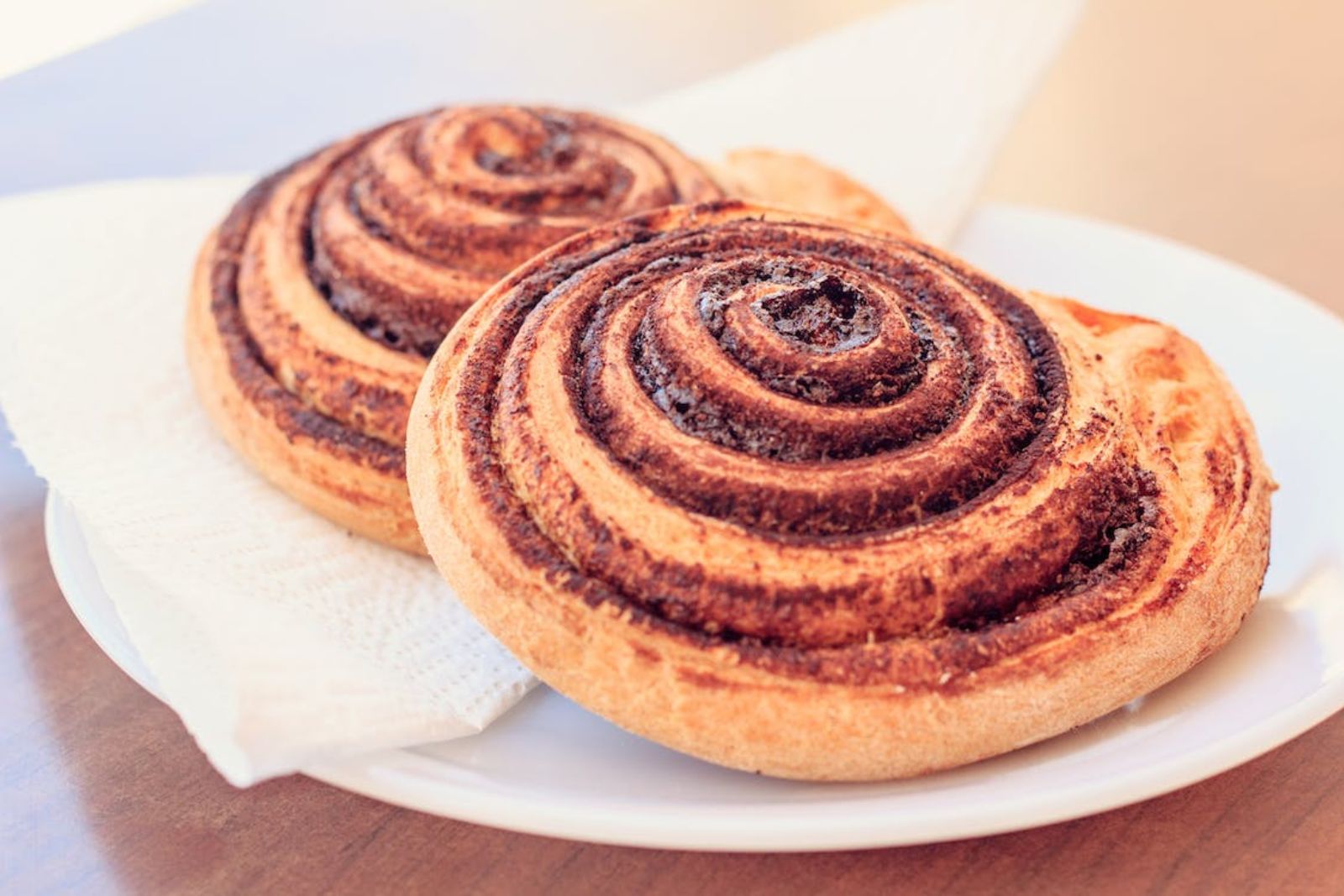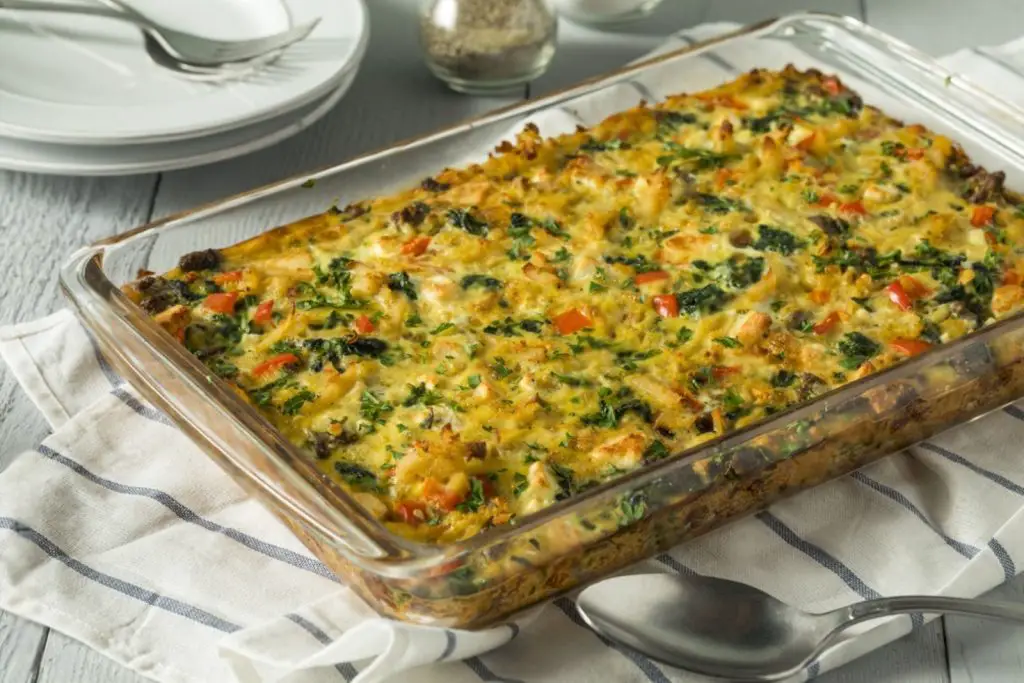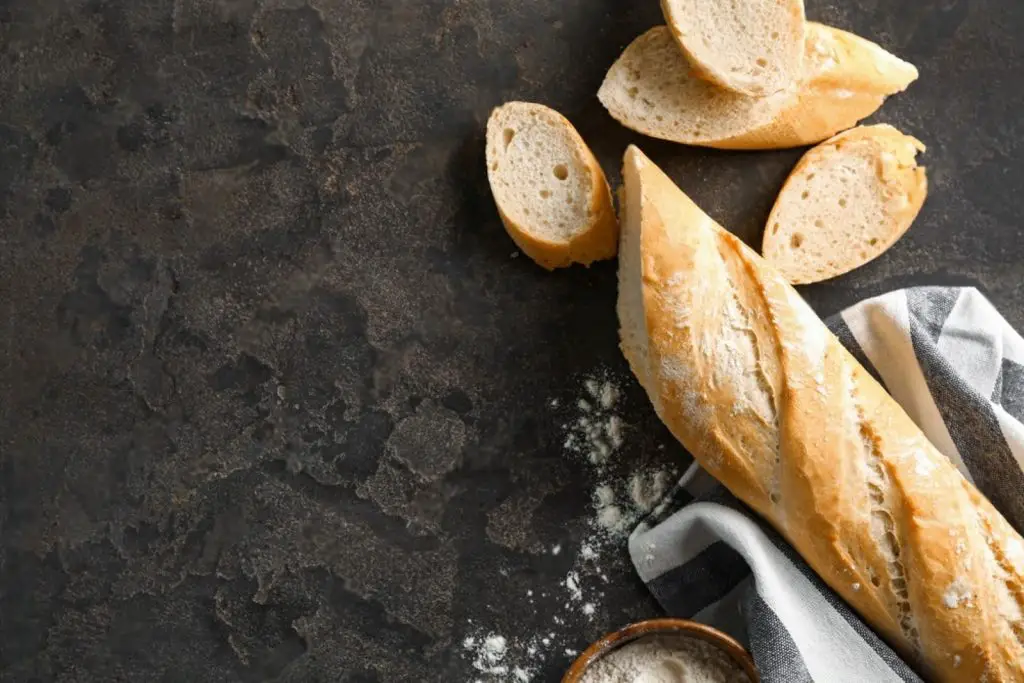
Pastries are delicious treats loved by many for their flaky, buttery texture and sweet or savory fillings. Whether you’ve baked a large batch of pastries or have some leftovers you want to preserve, freezing them is an excellent way to extend their shelf life and enjoy them at a later time. Freezing pastries properly will help maintain their taste, texture, and overall quality. In this article, we will provide you with a step-by-step guide on how to freeze pastries, ensuring they remain just as delightful when you’re ready to indulge.
Here’s a comprehensive guide on how to freeze pastries:
Step 1: Choose the right pastries
When it comes to freezing pastries, selecting the right ones is essential to ensure optimal results. The quality of the pastries you choose will greatly impact their taste and texture after freezing. Here’s why it’s important to opt for well-baked and fresh pastries:
- Retaining flavor: Well-baked pastries have a rich, golden color and a delicious aroma. Freezing these pastries at their peak freshness helps preserve their flavors. On the other hand, pastries that are already stale or past their prime may have a bland or off taste, which can further deteriorate during the freezing process.
- Maintaining texture: Pastries are known for their delicate and flaky texture. Freshly baked pastries have a light and airy interior, while stale ones tend to become dense and lose their crispness. Freezing stale pastries may exacerbate these texture changes, resulting in a less enjoyable eating experience.
- Preventing freezer burn: Stale pastries or those that have been sitting out for too long are more susceptible to developing freezer burn. Freezer burn occurs when the moisture within the pastry evaporates, leaving behind dry and dehydrated spots. This can lead to a tough and unappetizing texture. By choosing fresh pastries, you minimize the risk of freezer burn and maintain their quality.
To ensure the best results when freezing pastries, it’s crucial to start with well-baked pastries that are in good condition. If you have leftover pastries that have been sitting out for an extended period, it’s better to enjoy them immediately rather than freezing them. Remember, freezing can help preserve the freshness of pastries, but it cannot magically revive stale or poorly made ones. So, be selective and choose pastries that are at their best for freezing.
Should I freeze pastries before or after baking?
It is generally recommended to freeze pastries after baking. Freezing unbaked pastries can affect their rise and texture when they are eventually baked. Bake the pastries first, let them cool, and then proceed with the freezing process.
Step 2: Prepare the pastries for freezing
When it comes to freezing pastries, there are a couple of considerations to keep in mind regarding their size and portioning. While freezing whole pastries is an option, there are benefits to cutting them into smaller portions or individual servings before freezing. Here’s why you might want to consider this step:
- Convenient thawing and serving: Smaller portions of pastries tend to thaw more quickly and evenly compared to larger, whole pieces. By dividing your pastries into individual servings or smaller portions, you can easily thaw only what you need, reducing waste and allowing for a faster thawing time. This is particularly useful if you want to enjoy a single pastry without having to defrost the entire batch.
- Portion control: Cutting pastries into smaller portions provides better portion control. This is especially helpful if you have a variety of pastries or if you’re watching your calorie intake. By freezing individual servings, you can enjoy your favorite pastries in moderation without the temptation of consuming a whole pastry in one sitting.
- Versatility: Preparing smaller portions allows for greater flexibility when it comes to serving options. You can mix and match different types of pastries or even create your own pastry assortments. Additionally, smaller portions can be easily packed and transported for on-the-go enjoyment or for sharing with friends and family.
However, it’s important to note that freezing whole pastries is also a viable option. Some pastries, such as large croissants or Danish pastries, may be best preserved as whole pieces to maintain their shape and integrity. The decision to cut or freeze them whole depends on personal preference and the type of pastries you are working with.
Step 3: Allow the pastries to cool
One important step before freezing pastries is to ensure they have completely cooled down. Allowing pastries to cool to room temperature before freezing is crucial for maintaining their texture and quality. Here’s why this step is essential:
- Preventing condensation: When pastries are freshly baked, they retain some residual heat, and moisture is trapped within their structure. If you immediately place warm pastries into a freezer or packaging, the temperature difference can cause condensation to form inside the packaging. This moisture can lead to sogginess and affect the overall quality of the pastries. By letting them cool completely, you allow excess moisture to evaporate, reducing the risk of condensation during freezing.
- Avoiding freezer burn: Freezer burn occurs when moisture within the pastries evaporates and then re-freezes on the surface. This process can lead to the formation of ice crystals and dehydration, resulting in dry, tough, and unpalatable pastries. When pastries are not cooled properly before freezing, the residual heat can accelerate the formation of ice crystals, increasing the likelihood of freezer burn. Allowing pastries to cool to room temperature helps minimize the risk of freezer burn and maintains their moistness and tenderness.
To ensure the best quality and texture of your frozen pastries, it’s essential to exercise patience and allow them to cool completely before freezing. This process may take anywhere from 30 minutes to an hour, depending on the size and thickness of the pastries. Once they have reached room temperature, you can proceed with the packaging and freezing steps to preserve their deliciousness for future enjoyment.
Step 4: Wrap the pastries tightly
After allowing your pastries to cool completely, the next crucial step in freezing them is to wrap each pastry tightly in plastic wrap or aluminum foil. Individually wrapping the pastries provides several benefits in terms of maintaining their freshness and protecting them from freezer burn. Here’s why this step is important:
- Freshness preservation: Wrapping pastries tightly helps seal in their freshness. It creates a barrier that minimizes contact with air, which can cause staleness and flavor deterioration. By preventing exposure to air, the pastries are better protected, and their original taste and texture are preserved, ensuring a delightful eating experience when they are eventually thawed.
- Moisture retention: The tight wrapping acts as a protective layer, preventing excessive moisture loss during freezing. This is particularly important for pastries with fillings or those that rely on moisture to maintain their softness and moistness. The wrapping helps retain the pastry’s natural moisture, preventing them from becoming dry and unappetizing.
- Prevention of freezer burn: Properly wrapped pastries are less prone to developing freezer burn. Freezer burn occurs when air comes into contact with the surface of the pastries, leading to the dehydration of exposed areas. By tightly wrapping the pastries, you minimize air exposure, reducing the likelihood of freezer burn and maintaining their optimal texture and taste.
When wrapping the pastries, ensure the wrapping material is snug and covers the entire surface of each pastry. This helps create an airtight seal, minimizing the chances of air or moisture infiltration. For added protection, you can also place the individually wrapped pastries in a resealable plastic bag or airtight container to provide an extra layer of defense against freezer burn and odors from other frozen foods.
Step 5: Place the wrapped pastries in a freezer-safe container
After wrapping your pastries tightly, it’s important to take the additional step of transferring them into a freezer-safe container or resealable plastic bags. This extra layer of protection serves two primary purposes: preventing the pastries from absorbing unwanted odors and providing added insulation against temperature fluctuations. Here’s why this step is essential:
- Odor prevention: Freezers can sometimes contain strong-smelling foods or ingredients that may release odors. Placing your individually wrapped pastries in a freezer-safe container or resealable plastic bags acts as a barrier, preventing the pastries from absorbing these odors. This ensures that your pastries maintain their original flavors and aromas, free from any unwanted influences from the freezer environment.
- Temperature insulation: Freezer-safe containers or resealable plastic bags provide an extra layer of insulation, helping to maintain a consistent temperature around the pastries. Temperature fluctuations can affect the texture and quality of frozen pastries. The container or bag acts as a buffer against these fluctuations, reducing the risk of freezer burn and helping to preserve the pastries’ moisture and overall freshness.
When choosing a freezer-safe container, opt for one that is airtight and made specifically for freezer storage. It should be able to withstand low temperatures without cracking or breaking. Alternatively, resealable plastic bags specifically designed for freezing can also be used. Ensure that the bags are durable, seal tightly, and have no leaks.
When placing the wrapped pastries into the container or bags, try to arrange them in a single layer if possible. This allows for even freezing and easier retrieval when you need to thaw only a portion of the pastries. If you have multiple layers, separate them using parchment paper or a similar non-stick barrier to prevent sticking.
Step 6: Label and date the packages
After placing your wrapped pastries in freezer-safe containers or resealable plastic bags, it’s crucial to label each package with the name of the pastry and the date it was frozen. This simple step may seem minor, but it plays a significant role in ensuring the quality and organization of your frozen pastries. Here’s why labeling and dating the packages is important:
- Easy identification: As time passes, it can become difficult to remember which pastries are stored in each package. By labeling the packages with the name of the pastry, you can quickly identify what’s inside without the need to open every package. This saves time and minimizes the risk of thawing pastries you didn’t intend to consume.
- Consumption management: By dating the packages, you have a clear record of when the pastries were frozen. This helps you keep track of their storage duration and ensures you consume them within a reasonable timeframe. Different types of pastries have varying shelf lives in the freezer, and knowing the freezing date helps you prioritize consumption accordingly. It’s advisable to consume frozen pastries within a few months for the best quality, flavor, and texture.
- Inventory control: Labeling and dating the packages also assist in managing your frozen pastry inventory. You can easily track the quantity and variety of pastries you have in the freezer, making it simpler to plan your meals or determine if it’s time to replenish your supply. This prevents potential waste and allows you to enjoy your frozen pastries to the fullest.
When labeling the packages, use a permanent marker or adhesive labels that can withstand freezer conditions. Write the name of the pastry clearly and include the date it was frozen, preferably using the month and year format (e.g., “June 2023”). Place the labels in a visible location on each package for easy reference.
Step 7: Store in the freezer
Once you have labeled and dated the packages of your wrapped pastries, it’s time to store them in the freezer. Proper storage is crucial to maintain the quality and longevity of your frozen pastries. Here are some guidelines to follow when storing them:
- Suitable freezer location: Choose a suitable spot in your freezer for storing the pastries. Ideally, this should be a section with a consistent temperature and minimal temperature fluctuations. Avoid placing the pastries near the freezer door or in areas that are prone to warm air drafts when the freezer is opened frequently. Maintaining a stable and cold environment helps preserve the quality of the pastries.
- Single-layer storage: If possible, store the packaged pastries in a single layer. This allows for even airflow around each pastry, ensuring uniform freezing and thawing. If you have limited space or need to stack the packages, consider using dividers or layers of parchment paper between the layers to prevent the pastries from sticking together or getting crushed.
- Separation of different pastries: If you are freezing different types of pastries together, it’s a good practice to separate them to maintain their individual flavors and prevent cross-contamination. You can use dividers, freezer-safe containers, or layers of parchment paper to create boundaries between different types of pastries. This way, you can easily retrieve specific pastries without having to thaw the entire batch.
- Organized storage: Arrange the packages neatly in the freezer, making sure they are easily accessible and visible. Consider grouping similar pastries together or organizing them by date of freezing for better inventory management. This organization helps you keep track of your frozen pastries and prevents unnecessary digging and searching when you want to retrieve a specific pastry.
Remember to keep the pastries in an area of the freezer that is dedicated solely to frozen pastries and other baked goods. This prevents them from absorbing strong odors from other foods in the freezer, maintaining the integrity of their flavors.
How long can I store frozen pastries?
Pastries can typically last in the freezer for up to three months without significant loss in quality. However, this can vary depending on the type of pastry and its ingredients. To maintain the best taste and texture, it is recommended to consume frozen pastries within this timeframe.
Step 8: Thaw and enjoy
After storing your pastries in the freezer, the time will come when you’re ready to indulge in their deliciousness. Thawing and reheating the frozen pastries properly is essential to bring back their delightful texture and flavors. Here’s how to thaw and enjoy your frozen pastries:
- Thawing at room temperature: To thaw the frozen pastries, remove them from the freezer and place them on a plate or baking sheet at room temperature. Allow them to thaw naturally without any additional heat. The time required for thawing will vary depending on the size and type of pastry. Smaller pastries, such as cookies or muffins, may take an hour or two, while larger pastries, such as pies or danishes, may require several hours or even overnight.
- Preservation of texture and taste: Thawing at room temperature allows the pastries to gradually regain their moisture and softness without becoming overly soggy. This method helps preserve the original texture and taste of the pastries, ensuring a satisfying eating experience.
- Reheating for crispness (optional): While some pastries are best enjoyed at room temperature, others may benefit from a quick reheating to restore their delightful crispness. Preheat your oven to a low temperature, around 300°F (150°C). Place the thawed pastries on a baking sheet and warm them in the oven for a few minutes until they are heated through. Keep a close eye on them to prevent over-baking or burning.
It’s important to note that not all pastries require reheating, especially delicate ones like cream puffs or eclairs. Always refer to the specific instructions or preferences for each type of pastry.
Other related questions
Can I refreeze pastries?
Refreezing pastries is generally not recommended as it can affect their quality and texture. When pastries are initially frozen, the freezing process alters their structure and moisture content. Thawing and refreezing can lead to further moisture loss, resulting in dry and less flavorful pastries. It is best to consume pastries after they have been thawed once to ensure the best taste and texture.
How do I know if the pastries have gone bad after being frozen?
To determine if frozen pastries have gone bad, it is important to observe any noticeable changes in their appearance, texture, or smell. Signs of spoilage may include mold growth, freezer burn, significant changes in color or texture, or an off-putting odor. If you notice any of these indicators, it is best to discard the pastries to avoid the risk of consuming spoiled food.
Can I freeze pastries with fillings or cream?
Yes, you can freeze pastries with fillings or cream. However, it’s important to note that the texture of the filling or cream may change slightly after freezing and thawing. It is recommended to wrap them tightly and consume them within a shorter period for the best quality.
Can I freeze pastries with glazes or toppings?
It is best to freeze pastries without glazes or toppings. Glazes and toppings can become soggy or lose their texture during the freezing and thawing process. Consider adding the glaze or topping after thawing for the best presentation and taste.








